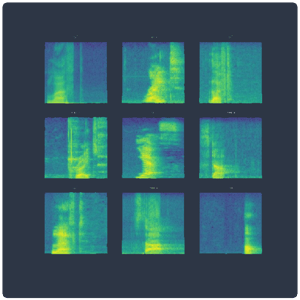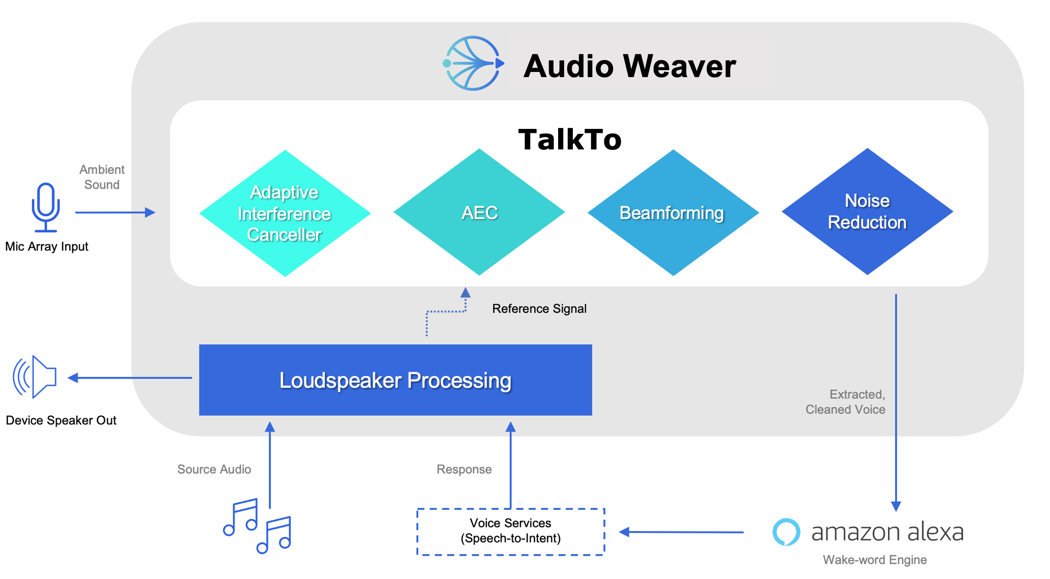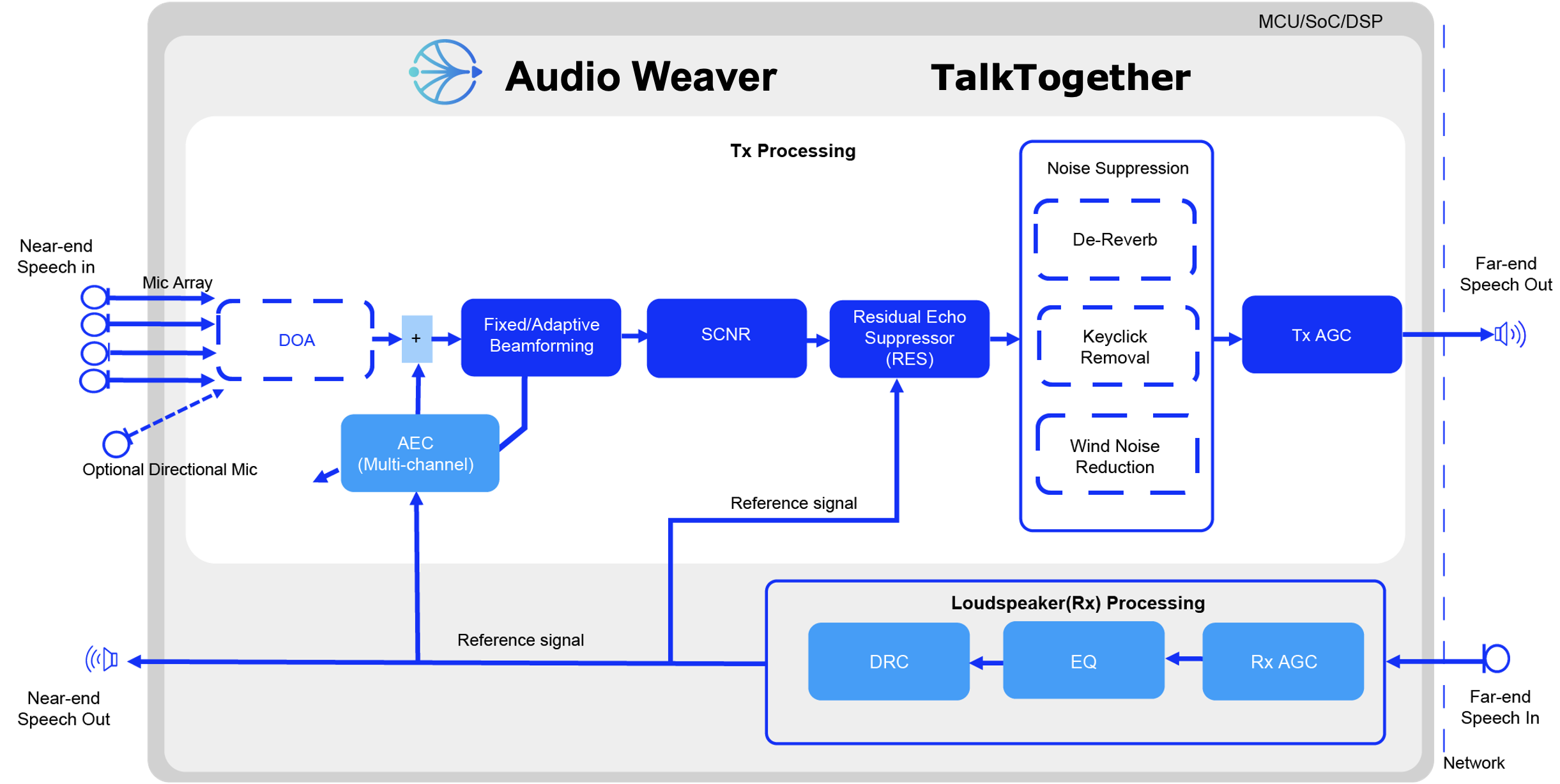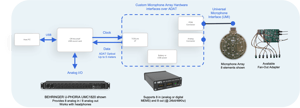
Features
Get the most out Audio Weaver with these user-favorite features.
- Output Processing IP
- Voice Control IP
- Voice Communications IP
- Sound Design IP
Playback
TalkTo
TalkTogether
Sound Synthesis
Innovative special modules needed for crafting safety sounds, including:
|
|
|
|
|
|
|
|
|
|
|
Process More with Less
MULTICORE AND MULTITHREADING
Use the power of Audio Weaver to distribute processing across multiple independent cores in a single layout. Simplify integration and streamline development to trim your margins.-2.png?width=300&name=MultiCore_V1_230914%20(1)-2.png)
Machine Learning Enablement
ML MODULE PACK
Product makers can now featurize data for training and deploy ML models into embedded systems using Audio Weaver
- Enables integration of custom models into complex processing chains
- Simplifies featurization of data
- Provides reproducibilty between supported targets
- Speeds up prototyping and time-to-target
- Allows for real-time tuning and resource analysis on target




